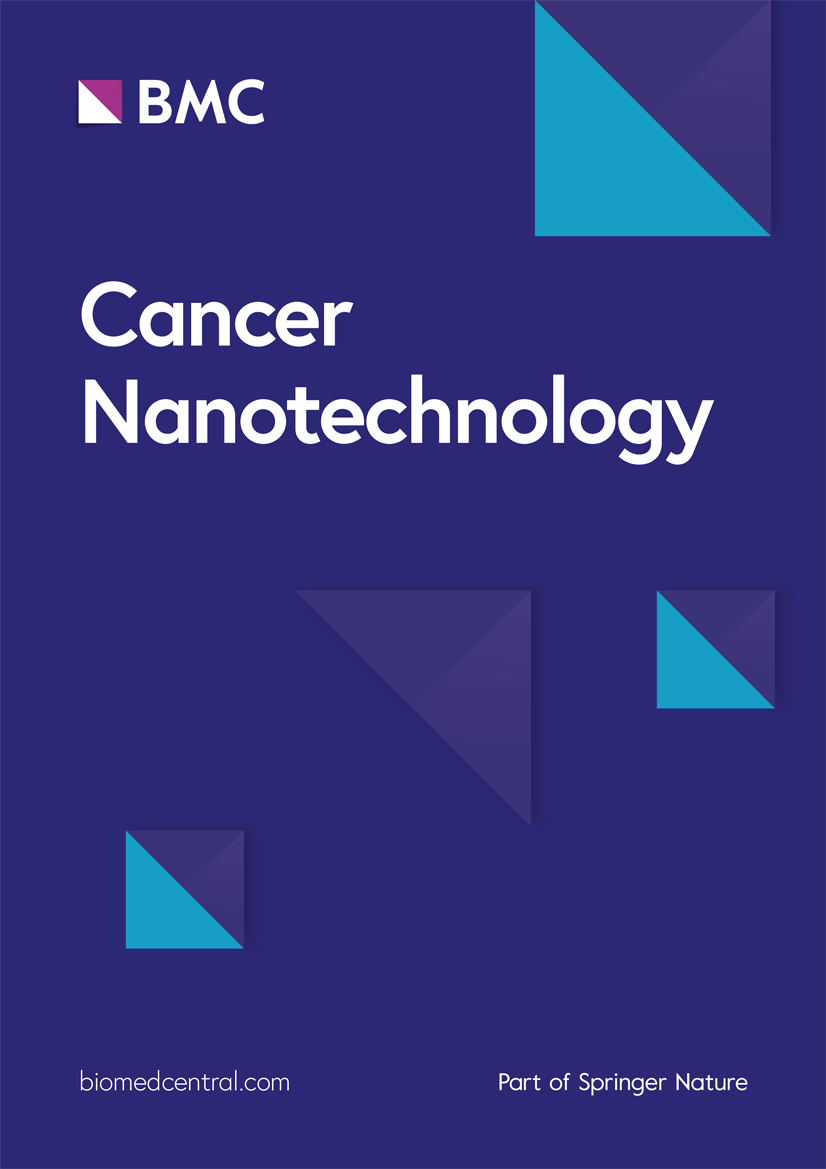Dual-targeting nanomedicine achieves synergistic multimodal therapy for tumor
IF 4.8
2区 工程技术
Q2 NANOSCIENCE & NANOTECHNOLOGY
引用次数: 0
Abstract
The poor targeting delivery efficiency and limited efficacy of single therapeutic approach have consistently posed significant challenges in tumor management. In this research, we have conceived and synthesized a dual-targeting nanodrug delivery system denoted as PDA-DEM-Fe3O4@M, which incorporates a polydopamine nanoparticle (PDA) with photothermal properties, diethyl maleate (DEM) as a chemotherapy agent accelerating tumor apoptosis, iron oxide nanoparticles (Fe3O4) eliciting magnetic targeting effects, and tumor cell membranes (M) contributing to homologous targeting capabilities. The synergistic effect of PDA-induced photothermal therapy and DEM-mediated chemotherapy has been demonstrated in this study to exert a robust inhibitory and cytotoxic influence on tumor cells. Additionally, the biocompatibility of this system has also been demonstrated. Through the synergistic effects of PDA’s photothermal therapy and DEM’s chemotherapy, this system demonstrated excellent inhibition and killing effects on tumor cells. Furthermore, we established its excellent biological safety profile. This study demonstrated the potential of this nanomaterial for clinical application in tumor therapy.双靶向纳米药物实现肿瘤多模式协同治疗
单一治疗方法靶向性差、疗效有限,一直是肿瘤治疗面临的重大挑战。在这项研究中,我们构思并合成了一种双靶向纳米药物递送系统,称为 PDA-DEM-Fe3O4@M ,它将具有光热特性的聚多巴胺纳米粒子(PDA)、可加速肿瘤细胞凋亡的化疗药物马来酸二乙酯(DEM)、可激发磁性靶向效应的氧化铁纳米粒子(Fe3O4)以及具有同源靶向能力的肿瘤细胞膜(M)结合在一起。本研究证明,PDA 诱导的光热疗法和 DEM 介导的化疗具有协同效应,可对肿瘤细胞产生强有力的抑制和细胞毒性影响。此外,该系统的生物相容性也得到了证实。通过 PDA 光热疗法和 DEM 化疗的协同作用,该系统对肿瘤细胞具有良好的抑制和杀伤作用。此外,我们还确定了其出色的生物安全性。这项研究证明了这种纳米材料在肿瘤治疗中的临床应用潜力。
本文章由计算机程序翻译,如有差异,请以英文原文为准。
求助全文
约1分钟内获得全文
求助全文
来源期刊

Cancer Nanotechnology
Pharmacology, Toxicology and Pharmaceutics-Pharmaceutical Science
CiteScore
5.20
自引率
1.80%
发文量
37
审稿时长
15 weeks
期刊介绍:
Aim:
Recognizing cancer as a group of diseases caused by nanostructural problems (i.e. with DNA) and also that there are unique benefits to approaches inherently involving nanoscale structures and processes to treat the disease, the journal Cancer Nanotechnology aims to disseminate cutting edge research; to promote emerging trends in the use of nanostructures and the induction of nanoscale processes for the prevention, diagnosis, treatment of cancer; and to cover related ancillary areas.
Scope:
Articles describing original research in the use of nanostructures and the induction of nanoscale processes for the prevention, diagnosis and treatment of cancer (open submission process). Review, editorial and tutorial articles picking up on subthemes of emerging importance where nanostructures and the induction of nanoscale processes are used for the prevention, diagnosis and treatment of cancer.
 求助内容:
求助内容: 应助结果提醒方式:
应助结果提醒方式:


